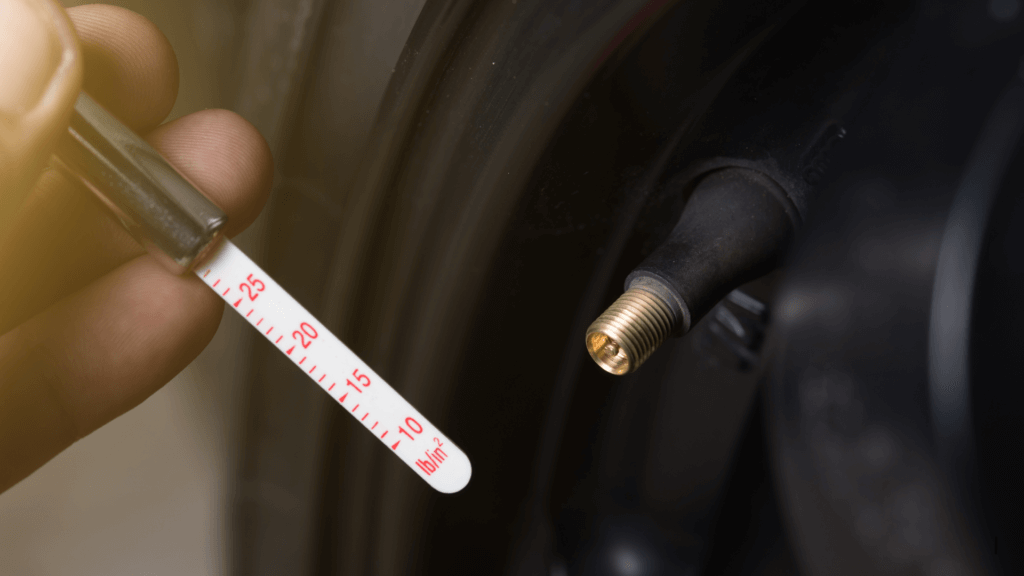
The Impact of Tires on Fuel Efficiency
June 2024
Fuel efficiency is a major concern for drivers today, especially with fluctuating gas prices and increasing awareness of environmental impact. Many factors contribute to your vehicle’s fuel efficiency, but one often overlooked aspect is your tires.
From the type of tire to their maintenance, tires play a crucial role in how much fuel your vehicle consumes. In this article, we’ll explore various ways that tires can affect your vehicle’s fuel economy and provide tips on how to make the most out of your miles per gallon.
Tire Pressure
Proper tire pressure is fundamental to fuel efficiency. Under-inflated tires increase rolling resistance, making your engine work harder to move the vehicle. According to the U.S. Department of Energy, properly inflated tires can improve your gas mileage by up to 3%. Conversely, over-inflated tires, while potentially reducing rolling resistance, can cause uneven tread wear and a harsher ride.
Tips for Maintaining Tire Pressure:
- Regular Checks: Check your tire pressure at least once a month and before long trips.
- Use a Reliable Gauge: Invest in a good-quality tire pressure gauge for accurate readings.
- Know Your Numbers: Refer to your vehicle’s manual or the sticker inside the driver’s door for the recommended PSI (pounds per square inch).

Tire Quality
Not all tires are created equal. High-quality tires, often labeled as low rolling resistance (LRR) tires, are specifically designed to improve fuel efficiency. These tires use advanced materials and tread designs to minimize the energy lost as heat when the tire rolls.
Benefits of Low Rolling Resistance Tires:
- Improved Fuel Economy: LRR tires can improve fuel efficiency by 3-4%.
- Long-Term Savings: While they may cost more upfront, the fuel savings over the tire’s lifespan can offset the initial investment.
- Eco-Friendliness: Reduced fuel consumption means fewer emissions, making LRR tires a greener choice.

Tire Type
The type of tire you choose can significantly impact fuel efficiency. For example, all-season tires offer a balance between performance and fuel economy, while high-performance tires, designed for maximum grip and handling, typically have higher rolling resistance.
Types of Tires and Their Impact:
- All-Season Tires: Good balance of fuel efficiency and performance.
- Performance Tires: Increased grip but higher rolling resistance and reduced fuel efficiency.
- Touring Tires: Designed for comfort and longevity, often with low rolling resistance.
- Winter Tires: Essential for cold climates but can decrease fuel efficiency due to softer rubber and aggressive tread patterns.

Tire Alignment
Proper wheel alignment ensures that your tires meet the road at the correct angle, preventing uneven tire wear and reducing rolling resistance. Misaligned tires can drag slightly, causing your vehicle to use more fuel to maintain speed.
Signs of Misalignment:
- Uneven Tire Wear: Check for wear patterns on your tires.
- Vehicle Pulling: If your car pulls to one side, it might be time for an alignment.
- Steering Wheel Vibration: Excessive vibration can indicate alignment issues.

Tire Rotation
Regular tire rotation helps ensure that all tires wear evenly. Even tire wear is crucial for maintaining consistent rolling resistance across all four tires, thereby optimizing fuel efficiency.
Tire Rotation Tips:
- Follow Manufacturer’s Recommendations: Rotate your tires as recommended, usually every 5,000 to 8,000 miles.
- Consistent Pattern: Use a consistent rotation pattern to balance wear.

Tire Size
The size of your tires can also influence fuel efficiency. Larger, wider tires increase the contact area with the road, which can lead to higher rolling resistance and reduced fuel economy. Conversely, smaller, narrower tires can improve fuel efficiency but may sacrifice handling and stability.
Choosing the Right Size:
- Manufacturer Specifications: Always use the tire size recommended by your vehicle’s manufacturer.
- Consider Driving Conditions: Match your tire size to your driving needs for optimal performance and efficiency.
Tire Weight
The weight of your tires affects your vehicle’s overall weight, which in turn impacts fuel efficiency. Lightweight tires reduce the energy required for acceleration and deceleration, leading to better fuel economy.
Lightweight Tire Options:
- Ply Rating: Avoid higher than necessary ply ratings. A 10 ply tire is much heavier than a 4 ply tire.
- Performance Alloys: Consider wheels made from lighter materials like aluminum alloys.
- Avoid Heavy Accessories: Additional features like oversized rims and decorative elements can add unnecessary weight
Tread Design
The tread design of your tires plays a role in rolling resistance and, consequently, fuel efficiency. Tires with more aggressive treads, such as off-road or winter tires, generally have higher rolling resistance due to their deeper grooves and blocks.
Choosing the Right Tread:
- Urban Driving: Opt for tires with a smoother tread for less rolling resistance.
- Rural or Off-Road: Choose tires with appropriate tread patterns for your driving environment.

Tire Maintenance
Routine maintenance is key to ensuring your tires are contributing to, rather than detracting from, your vehicle’s fuel efficiency. Regular inspections can catch issues like misalignment, uneven wear, or low tire pressure before they impact your MPG.
Maintenance Checklist:
- Monthly Pressure Checks: Keep your tires at the correct PSI.
- Quarterly Inspections: Look for signs of wear and tear.
- Annual Alignment and Balancing: Ensure your tires are correctly aligned and balanced.

